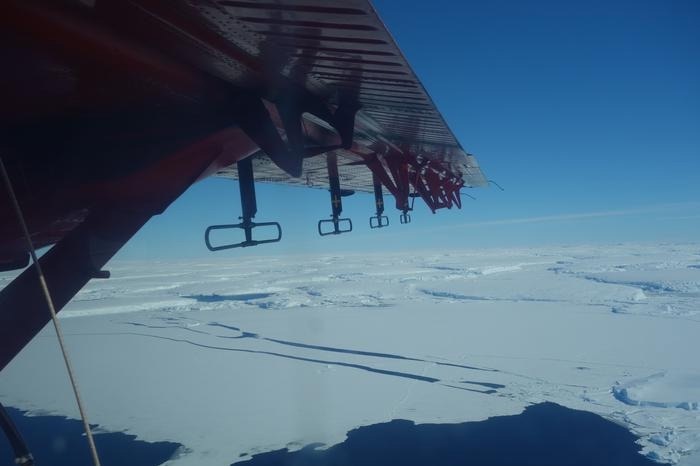The ground beneath Antarctica’s most fragile glacier has been mapped for the very first time by a group headed by a Swansea expert allowing researchers to better understand how climate change is affecting it.

Image Credit: Carl Robinson/British Antarctic Survey
Analysis of the geology beneath West Antarctica’s Thwaites Glacier reveals that there is less sedimentary rock than anticipated, which could alter how the glacier slides into the ocean in the future decades.
The glacier, which is the size of Great Britain or the state of Florida in the United States, is one of Antarctica’s fastest-moving ice-ocean systems.
The British Antarctic Survey (BAS) spearheaded the study, which included Professor Bernd Kulessa of Swansea University’s geography department. The discoveries resulted in a new map of the region’s geology, created by BAS scientists and published in the journal Science Advances.
Sediments allow faster flow, like sliding on mud. Now we have a map of where the slippery sediments are, we can better predict how the glacier will behave in future as it retreats.
Dr. Tom Jordan, Geophysicist, British Antarctic Survey
Dr. Tom Jordan guided the study.
The grounding zone of the Thwaites glacier, where it meets the seafloor, has receded 14 km since the late 1990s. Much of the ice sheet lies below sea level, making it vulnerable to rapid, irreversible ice loss, which could raise global sea levels by more than a meter in a matter of centuries.
The new research is based on airborne surveys conducted by aircraft outfitted with radar that can see through the ice to the rocks beneath, as well as sensors that can map small variations in gravity and magnetism thousands of meters beneath the land and seabed on which the glacier rests.
The scientists then use these various data sources to create a 3D image of features, such as the type and extent of various rocks.
It is unclear how this new subglacial geology knowledge will alter estimates of ice flow and loss from Thwaites and other glaciers. The study does reveal that the geological landscape has a direct influence on basal shear stress, which impacts how rapidly ice flows into the ocean.
Members of the study team will now conduct further in-depth analyses of these processes. Modelers may also be able to produce more reliable estimates of future ice loss using the new data.
The ongoing rapid retreat of the Thwaites Glacier is arguably one of the greatest uncertainties in future sea level rise predictions. By combining a series of airborne geophysical datasets and analyzing them using state of the science concepts, our study reveals the geology beneath the ice for the first time.
Bernd Kulessa, Professor, Geography Department, Swansea University
Bernd Kulessa states, “This is important because the glacier ice can slip more easily over some types of rock than others, and geothermal heating will help the ice to slip even faster in some areas. Our study therefore provides an exciting and novel basis for better predictions of future Thwaites Glacier ice flow and sea level rise.”
We hope that by showing the detailed geology, and how it correlates with the basal friction, future models of glacial retreat will have lower uncertainty, as the controls of the basal processes will be better understood. No single scientific study could ever match the scale and challenge of climate change. But it is the incremental building of all the individual scientific studies like this that allows us to understand and tackle that challenge.
Dr. Tom Jordan, Geophysicist, British Antarctic Survey
Professor Kulessa is a UK researcher in the GHOST (Geophysical Habitats of Subglacial Thwaites) project, which is one of eight major scientific projects financed jointly by the US National Science Foundation and the UK Natural Environment Research Council as part of the International Thwaites Glacier Collaboration.
Journal Reference:
Jordan, T. A., et al. (2023). Geological sketch map and implications for ice flow of Thwaites Glacier, West Antarctica, from integrated aerogeophysical observations. Science Advances. doi.org/10.1126/sciadv.adf2639.